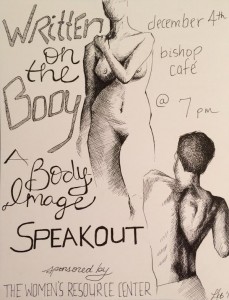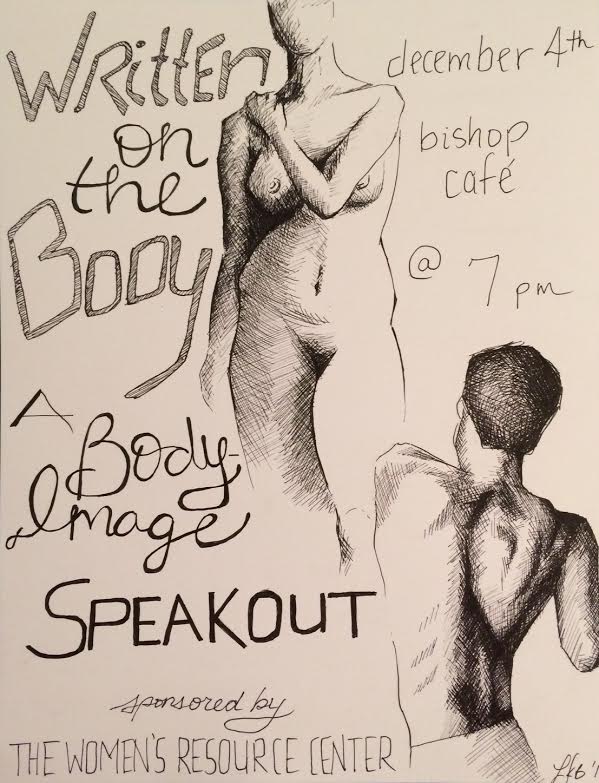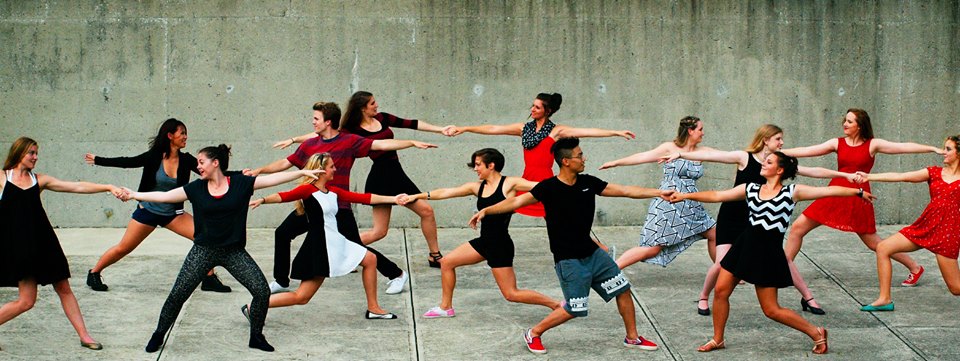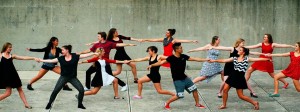
Counseling Services vetoes artist’s promotion for ‘Written on the Body’ event
By Leah Budde
Copy Editor
A few weeks ago, a friend who interns in the Women’s Resource Center approached me, asking if I could design a poster to advertise their annual event, “Written on the Body.”
The event invites OWU students to gather and talk about body image, promoting a more positive view of ourselves and the bodies we live in.
As a fine arts major with concentrations in ceramics and figure drawing, my primary subject is the human body, so I was pleased to use my skills to help out a friend, and support the event. I promptly drew up a design, and received positive feedback from the Women’s Resource Center.
However, I was later notified that the Counseling Services department (which oversees the Women’s Resource Center), denied use of the poster because it may have been too “triggering” or “upsetting” to use as advertisement, and may have discouraged attendance to the event.
I’ll set aside my personal opinions about effective marketing, and focus instead on what I find most unsettling about the decision not to use this poster for the event.
Perhaps I have a skewed perspective — I do spend three hours with a nude model every Tuesday and Thursday night — but in no way do I find nudity offensive or embarrassing. And, from my understanding of the intent of “Written on the Body,” the Women’s Resource Center would like to dispel feelings of shame and encourage body positivity.
In my mind, the goals of what I do artistically and the goals of the event are very much aligned.
In the three and a half years that I’ve been a part of this institution, there have been many cases in which I feel the OWU community has become concerned with political correctness to the point of excess. This situation serves as a prime example.
If counseling services wants to stand behind “Written on the Body” as a project to promote a body-positive campus, I see their choice to censor a drawing of the human form as a complete contradiction of their alleged goal.
I know undoubtedly that the image of a male back alone would not cause controversy, so I have to assume that what is most offensive about this poster is the frontal image of a female figure.
Rather than start a rant about gender inequality, I’ll instead beg the question: if this drawing is too graphic to use in an advertisement on a university campus, how does Counseling Services feel about centuries of art that includes female nudes?
What is the difference between my choice of subject matter versus Titian’s or Manet’s or Eakins’ (not to promote myself, of course, to any such level of talent)?
As an artist, I am fully aware that exhibiting my work invites both negative and positive feedback; I am in no way personally offended that my poster won’t be used.
I simply find it disappointing that the liberal arts institution I’m a part of has apparently deemed the artwork I produce too offensive to be displayed.
What bothers me above all is the implication of this decision, which is that the image of the human body (or, more specifically, the female body) is inherently too graphic for the OWU community to handle.


